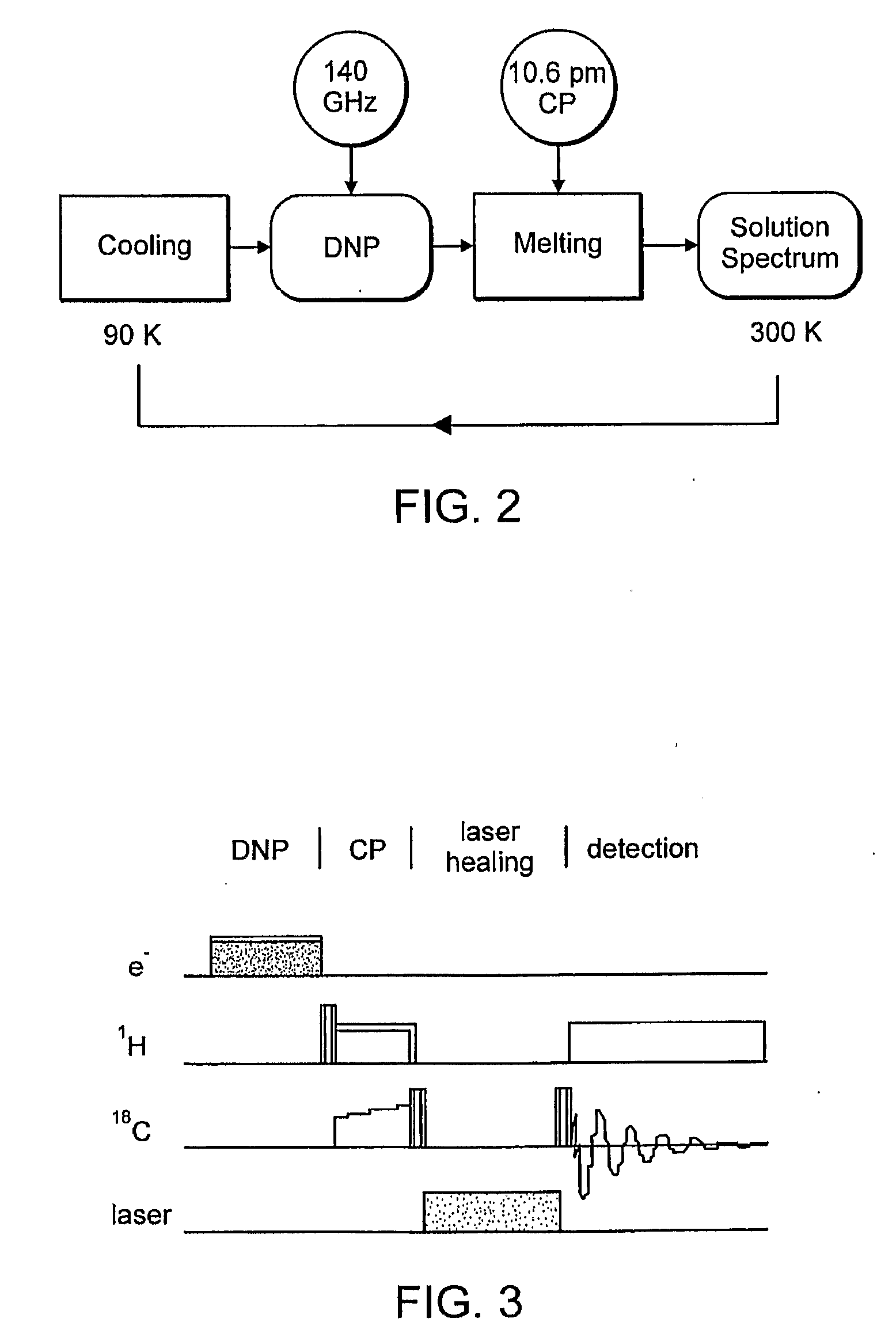Temperature-jump dynamic nuclear polarization
a dynamic nuclear and temperature-jump technology, applied in the field of temperature-jump dynamic nuclear polarization, can solve the problem of significant decrease of overhauser enhancement, and achieve the effect of enhancing the sensitivity of liquid-state nmr or mri experiments
- Summary
- Abstract
- Description
- Claims
- Application Information
AI Technical Summary
Benefits of technology
Problems solved by technology
Method used
Image
Examples
Embodiment Construction
[0020]The inventive methods have been used to generate enhancements in the range of 140-280 in NMR spectra of low-γ spins such as 13C and 15N. In these experiments, we polarized the 1H spins in various samples at low temperatures (˜90 K) using biradical polarizing agents2, 34. The polarization was transferred to low-γ spins with cross polarization, the sample was melted with an infrared laser pulse, and the enhanced signal observed in the presence of decoupling. If the polarization step were to be performed at a lower temperature (e.g., 10 K), then an even larger enhancement factor would be observed.
[0021]These experiments were carried out with the apparatus shown in FIG. 1. An optic fiber 10 delivered 10.6 μm radiation from a CO2 laser (not shown) onto a sample. The sample was contained in a 2.5 mm quartz rotor 12 that can withstand temperature cycling that includes repeatedly cycling the sample between about 100 K where the dynamic nuclear polarization occurs and about 300 K where...
PUM
 Login to View More
Login to View More Abstract
Description
Claims
Application Information
 Login to View More
Login to View More - R&D
- Intellectual Property
- Life Sciences
- Materials
- Tech Scout
- Unparalleled Data Quality
- Higher Quality Content
- 60% Fewer Hallucinations
Browse by: Latest US Patents, China's latest patents, Technical Efficacy Thesaurus, Application Domain, Technology Topic, Popular Technical Reports.
© 2025 PatSnap. All rights reserved.Legal|Privacy policy|Modern Slavery Act Transparency Statement|Sitemap|About US| Contact US: help@patsnap.com



